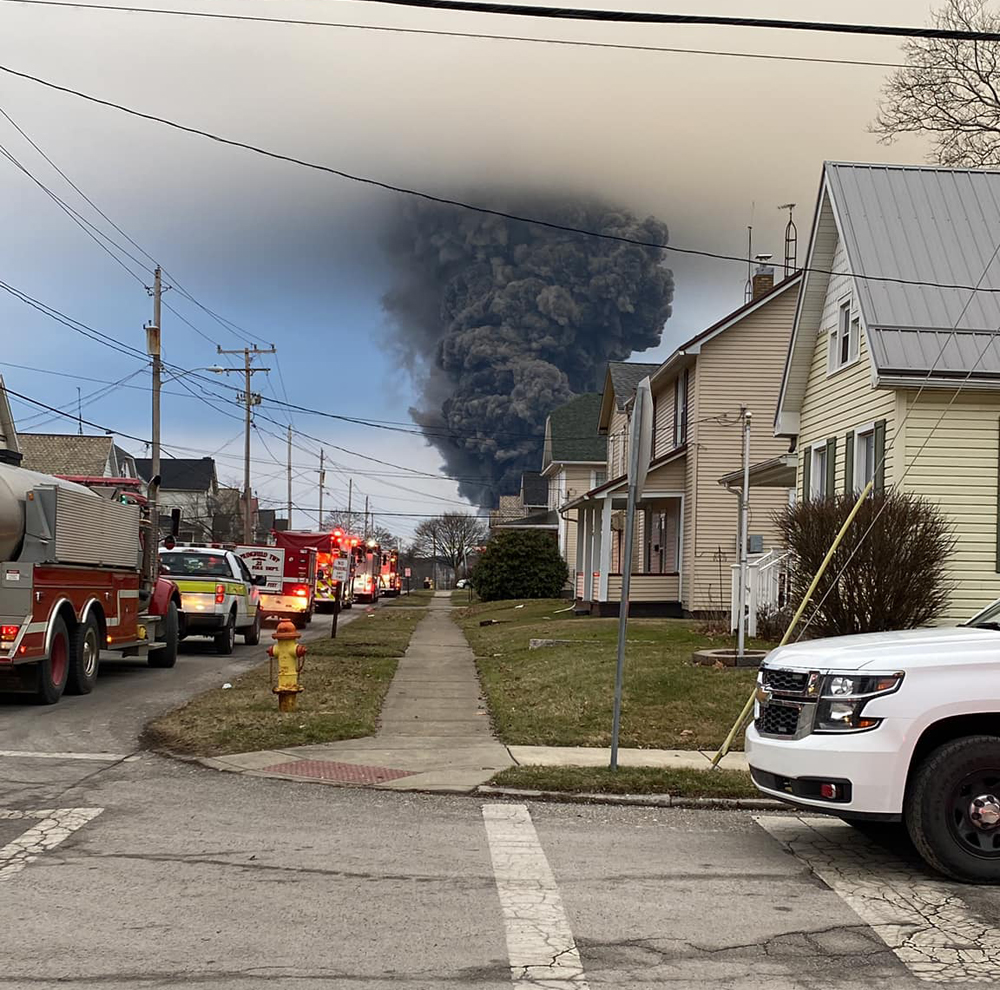According to court documents, fire investigators with the U.S. Forest Service found that the fire was sparked by a hot cinder from one of the D&SNG’s daily excursion trains.
“Federal fire investigators have determined that the 416 Fire was ignited by particles emitted from an exhaust stack on a coal-burning, steam train engine owned and operated by Defendants,” the lawsuit states. “The United States suffered significant damages, including expenses in its efforts to suppress the 416 Fire and to rehabilitate the public lands damaged by the 416 Fire, a rehabilitation process that still continues.”
Investigators found “a collection of numerous, extinguished embers, cinders and ash particles on the ground adjacent to the railroad track, including at the specific point of fire origin,” the lawsuit reads. Investigators also talked to multiple witnesses who said they saw the fire start after the steam train had passed.
The lawsuit, which was filed in U.S. District Court, states that the narrow gauge railroad has caused a number of other fires in the past, including the 1,000-acre Goblin Fire in 2012, the 550-acre Schaff II Fire in 2002, and the 270-acre Mitchell Lakes Fire in 1994.
The 416 Fire forced the evacuation of thousands of people near Hermosa and closed the railroad for well over a month. Train service resumed in July after rain helped reduce the fire danger, but it was disrupted again a few weeks later when a series of mudslides impacted the railroad in the recently burned area, again forcing the railroad to significantly alter its operations until fall.
Almost as soon as the fire began, local residents were blaming the railroad for the blaze. Multiple eye witnesses told local news outlets that they saw the fire start after the train passed by.
In September, a number of local residents and businesses filed a lawsuit against the D&SNG, American Heritage Railways and its owner, Allen Harper, alleging that they did not do enough to prevent the fires. Although the railroad has not taken responsibility for the 416 Fire, it has vowed to do more to prevent locomotive-caused fires in the future. In July, the railroad began work on converting K-37 locomotive No. 493 to burn oil and it announced that it would be purchasing two new diesel locomotives.














My share of that cost comes to about 7-cents. The cost of illeagal immigration to the US taxpayers in 2017 was 113 billion dollars, so I’m not concerned about the cost of the fire, which was probably not the railroad’s fault anyway.
Maybe it’s time to completely convert this operation to oil burning. Climate change is making things hotter and drier and coal burning isn’t feasible anymore. Clearly.
As for “shame on the government.” Um. OK. Sure. But we ALL pay for federal fire fighting efforts so this costs all taxpayers.
They have been operating steam for over a hundred years, and now, it’s a problem? Let’s look at the area in question in 20 years and re-evaluate the “damage.”
As for the lawsuit by the local businesses, they are cutting their own throat. Without the railroad drawing in visitors, they will not survive on their own merit.
If Mr. Harper was smart, and I’ve heard people say he is, then this is when you either file for Chapter 11 Bankruptcy, or you just shut down the operation…and then here the people complain and whine when the tourism industry collapses and Durango and Silverton are nothing but ghost towns…that’s capitalism at it’s finest.
This is totally stupid.They have spray nozzels located all the way around the inside of the stacks. Anything coming out of those stacks is going to be completely soaked with water before coming out. As for those government investigators finding extinguished embers beside the track, even an idiot would know you can find cinders all along the track when you burn coal. But in this case, they are soaked with water when they come out. SHAME on the government for this senseless lawsuit.
After this lawsuit, when the current policy expires, the odds are they will no longer be able to get insurance at a reasonable price. As a result, they may have to either convert the steam fleet to oil power, or convert to diesel-hauled trains or a combination of both. In that case, whether steam remains will likely be contingent on the cost of conversion to oil firing.
However, D&S does have two MP2000NG narrow gauge diesels on order from Motive Power & Equipment Solutions of South Carolina and is converting K-37 493 to oil-firing. Let’s hope that is successful so steam can continue on the D&S. (and Cumbres & Toltec.)
The Federal Government $25 million lawsuit may prove to be the most problematic because they have unlimited resources to apply to the prosecution of the suit, and if they lose, to continue to appeal.
Combined with the business owners lawsuit, it is a 1-2 punch against D&S coal-fired steam.
at some point, this will be the end of steam operations there. 1910-era coaches will be pulled by little electric track inspection cars. Blah.